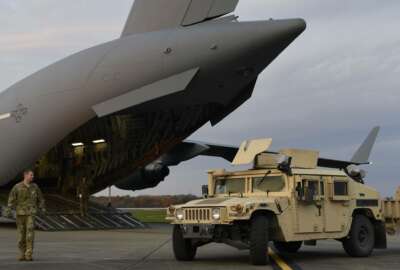
GAO’s emerging tech shop developing framework to test reliability of AI algorithms
A year into the COVID-19 pandemic, the Government Accountability Office still faces a higher demand for its oversight work.
The Government Accountability Office expects to take on as many as 200 COVID-19-related projects over the next five years, and is staffing up its emerging technology office to keep up with oversight of artificial intelligence.
A year into the COVID-19 pandemic, GAO still faces a higher demand for its oversight work.
To keep up with every request Congress asks of its watchdog office, GAO is asking for an $83 million increase to its budget and 220 additional full-time employees.
GAO Comptroller Gene Dodaro said Wednesday that the agency’s work in fiscal 2020 saved the federal government nearly $78 billion, and or every dollar Congress invested in GAO, the agency identified $114 in cost savings.
The biggest cost savings come from programs with the highest level of spending, such as health care and defense weapons systems. But Dodaro said GAO also eliminated billions of dollars in identity theft fraud simply by moving up when employers send W-2 information to the IRS.
Despite the return on investment, House Appropriations Committee’s legislative branch subcommittee chairman Tim Ryan (D-Ohio) said granting GAO’s full budget request would have a hard time making it through to the final spending package for FY 2022.
“While we understand that your workload is increasing, I’m afraid that the subcommittee allocation may not be increasing at a reciprocal rate,” Ryan said at a hearing Wednesday. “As you know, budgeting is, unfortunately, a zero-sum game and it will be hard to accommodate your healthy request, but I can assure you we will do our absolute best for you.”
In FY 2020, agencies implemented 77% of GAO’s recommendations.
In order to keep pace with the rate of emergency spending, GAO conducted real-time audits of trillions of dollars of pandemic aid over the past year and provided monthly briefings to congressional committees.
GAO also released bimonthly COVID reports, issued 40 recommendations calling for mid-course correction of pandemic response programs and provided input on a vaccine distribution plan last fall.
GAO received oversight requests from 90% of standing committees in Congress and fulfilled 500 of those requests. Dodaro said GAO makes reports required by law a top priority, followed by requests made by the chairmen and ranking members of each committee.
“We’re able to get to all the requests that we accept. We may not be able to get to them as fast as the committee would like,” Dodaro said, adding that he regularly meets with committee leadership to update them on GAO’s progress and to prioritize work on pending requests.
GAO working on AI ethics framework
Dodaro said he’s making GAO’s portfolio of emerging technology work a top priority, and is staffing up its Science, Technology Assessment, and Analytics team to keep up with demand.
The STAA team started with 70 employees in 2019, but Dodaro said STAA will grow to 120 employees by the end of this year. The agency’s budget request, he added, would go toward expanding STAA’s staff to 140 employees.
Since STAA’s creation, GAO has brought on new hires in fields like quantum mechanics, microbiology and public health. STAA has conducted infection disease modeling work on COVID and upon requests from members, provided two-page summaries of emerging technologies.
“They outline what the technology is, what the some of the benefits of the technology are, what’s the status of the development of the technology and what are some of the challenges and policy implications,” Dodaro said.
STAA has also conducted deeper reviews on 5G and AI’s impact on health care and law enforcement
In light of several agency frameworks on AI ethics, Dodaro said GAO is also working on a framework for evaluating artificial intelligence algorithms.
“We have to make sure there’s no bias in artificial intelligence, and that the data that goes into it is high-quality and actually the algorithm produces a good result,” Dodaro said.
In addition to providing oversight of agency programs, GAO has also coordinated with agency inspectors general on pandemic spending oversight.
The Labor Department’s inspector general, for example, investigates fraud and program integrity of the agency’s unemployment insurance program, while GAO looks at the challenges states are facing and whether relief spending is meeting objectives.
Most criminal investigation work happens in IG offices, but Dodaro said GAO is working with state auditors and the Justice Department IG.
Dodaro said pandemic spending didn’t make it onto GAO’s annual High Risk List of federal programs because much of the pandemic went out at the state level, but GAO is taking a closer look at this area.
While federal and state agencies made speed a priority for pandemic spending, Dodaro said GAO will look at the tradeoffs between speed and the effectiveness of this spending.
“In the interest of getting money out earlier, the signal that was sent was to move quick to get the money out, and to not let a lot of barriers be put in place. Sometimes you need some speedbumps in order to make sure these things don’t happen,” Dodaro said.
Copyright © 2025 Federal News Network. All rights reserved. This website is not intended for users located within the European Economic Area.
Jory Heckman is a reporter at Federal News Network covering U.S. Postal Service, IRS, big data and technology issues.
Follow @jheckmanWFED
Related Stories





